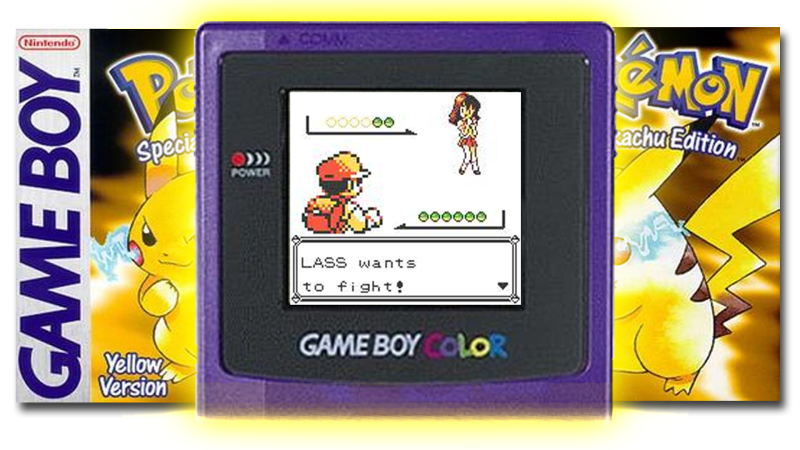Nicholas1024
Smash Lord
- Joined
- Mar 14, 2009
- Messages
- 1,075

DrillMan.exe joins the brawl!
Stats:
Jumps:4/10
Air speed: 8/10
Fall speed: 5/10
Walk speed: 9/10
Run speed: 7/10
Attack speed: 8/10
Power: 3/10
Weight: 6/10
Mechanic:
DrillMan.exe, as you might guess via his name, drills through the stage. However, unlike Master Hand, he can't win just by destroying the stage. You see, DrillMan's various attacks leave a narrow (depth-wise) tunnel in the stage, leaving the background completely intact. These tunnels are hardly stable, after half a second of remaining onscreen, that portion of the background will begin to shake, caving in after another half second and returning to the way it was. Should another stage-removing move be used in that portion of stage, its timer will be refreshed. If a foe or DrillMan.exe is inside that portion of the stage when this happens, they'll be pitfalled and returned to the surface. To summarize, The stage returns to normal after one second of being undisturbed, if you're still there after that, you'll be pitfalled.
Specials:
Neutral Special: Portable Drill Hole
One of DrillMan.exe's signature moves from his boss fight, he creates a bowser-sized black hole in the very fabric of space-time, which shoots out a drill. These bowser-sized drills have 20% stamina, making them hard to break, but only do 7% damage and minor knockback on hit, moving at ganon's run speed. Additionally, if you aim the control stick after inputting the move, you can angle the hole itself, letting you shoot the drill in any direction you please. (In practice, this means one of the eight compass directions, due to the limitations of the control stick.) If you use this input again when the hole is already out, it will shoot another drill in the same location and direction. To create a new hole, simply hold down the input, which will create a new drill hole (while shooting a drill), and destroy the old one. Lag for shooting a drill is low, creating a new hole is rather laggy. By the way, when angled, these drills can and do go completely through the stage. If the area where a hole was becomes occupied by a solid object (say... because of a cave in), the hole will disappear.
[collapse=OOC concerns]
For those unaware, this is indeed how drills are created in his boss fight, and it's a minor plot point that DrillMan.exe drills straight through the internet, connecting the science network of Scilab to the dark depths of the Undernet.
[/collapse]
Up Special: Drill Form
Another of DrillMan.exe's signature moves, the navi's top half changes into a drill, and he tears into the fabric of space time... reappearing at the location of your drill hole portal from the neutral special. That's it. One more thing... this move leaves a kirby-sized black hole like the neutral special where DrillMan was, and this hole will stay there for 1 second before disappearing. Until then, the two holes act as a portal, anything that enters one hole will appear out the other one. As you'll see later on, this means that gimping offstage with DrilMan requires a stagespike or at least knocking the opponent away, else they can recover the same way you did. There's only a little lag on either end, this will not send you into helpless, though you have to touch ground and wait for the new hole to disappear before doing it again. If there's no N-spec hole when you use this move, DrillMan.exe will look annoyed while he plummets to his doom.
Down Special: Fissure Drill
DrillMan.exe charges up energy before plunging a hand drill down into the ground beneath him. As an attack this does 14% damage with average knocback. More importantly, this leaves a pitfall trap where you used the smash. However, unlike most pitfalls, if the opponent falls into this one, they'll drop completely through the stage, likely for a KO (In fact, if the stage stretches to the bottom blast zone like on Yoshi's Island or Mushroomy Kingdon, it's a guaranteed KO), and the pitfall will not be removed. This pitfall is also extremely visible, with an enormous crack designating the danger. As a side note, since the pitfall reaches through the stage, if an opponent hits the middle of the pitfall due to terraforming, they'll get spiked anyway. Please note that DrillMan.exe can also get sent into this and spiked (after a half second grace period to move away from the area), although it presents less of a danger due to his great recovery. Finally, if you use this again, the first pitfall will disappear, using this on platforms is a waste of time, lag is notable.
Side Special: RockCube
DrillMan.exe summons a cube of solid rock directly in front of him, a bit larger than bowser, with 25% stamina. There can only be one of these onstage at a time (using this again will destroy the old cube), lag is moderate. On its own, this simply blocks anyone from moving into the space the cube occupies. However, if a rock cube is destroyed (by any method other than being pushed off a blast zone or another cube being summoned), it will break apart into three kirby-sized pieces of rubble, each with 7% stamina. These rubble pieces can be thrown like items, and are considered solid (that is, you can't move through said rubble). Additionally, if a piece of rubble gets destroyed by conventional means (aka: not via blast zone/strange MYM mechanics), it will shatter into 6 smaller pieces (each half the size of a pokeball), which will be propelled forwards (at random angles up to a diagonal) at the speed of Fox's blaster. These pieces each only do 2% damage, but the sheer number of them involved makes this a good way to interrupt camping or nail someone in close by for major damage, especially if you use this on the remains of a recently destroyed rock cube. Just make sure you're the one using these shrapnel projectiles and not them.
Standards:
Dash Attack: Rubble Push
DrillMan.exe charges forwards at pika's run speed, arms outstretched. On contact this does 10% and pushes the opponent forwards. Additionally, this move can be used to push along rock cubes and rubble, and will not do any damage to either of them. However, be warned that DrillMan.exe will move slower as he pushes more weight, down to ganon's walk speed if he's pushing the rock cube and a bowser-weight opponent. This state lasts as long as you hold down the button, lag is low.
Jab: Excavation
DrillMan.exe strikes with his head-drill in the direction you push the control stick, doing 4% damage and minor knockback with a range similar to Marth's F-air. Additionally, you can aim the hitbox up or down by holding that direction shortly after initiating the attack. However, like many of his other moves, this destroys the stage where it hits, letting you carve out your own cave to combo the opponent in. The lag is also fairly low, making this easily followed up. The downside? There's some very punishable extra lag should you come into contact with a shield during this move.
Down Tilt: Shrapnel Drill
DrillMan.exe takes one of his drill-arms and does a low horizontal slash in the ground. This does 7% damage and minor knockback, making it a decent spacing tool. However, considering it also removes a pokeball-thick divot of the stage where its hitbox is, this will also trip a shielding opponent, although the divot isn't deep enough to prevent them from rolling out. Lag is moderate, this is great for starting combos as well as continuing them, being better against grounded opponents and dealing more damage than the jab.
Forwards Tilt: Stabbing Drill
DrillMan.exe stabs forwards with one of his hand drills, doing 6 hits of 3% and low horizontal knockback. This move has average lag and reasonably long duration, and if all the hits connect on a shield, it's likely to cause a shield break. However, this move also has fairly strong shield push, ensuring that you'll normally only connect with one or two hits (even without any SDI). On the other hand, if the opponent is trapped against a wall or rock cube... suddenly you've found a combo move that hits for 18% damage, breaks shields, and outlasts spot dodges. As a side note, if you've excavated a pit behind a shielding opponent, you can definitely use this to push them into it for further followups.
Up Tilt: Drill Flip
DrillMan.exe puts both of his hand-drills to the ground, lunging forwards a stage builder block before swinging them both upwards. The range on this is comparable to Ike's up-tilt (after the lunge), and this does destroy the stage, making it notable for making a nice wall to combo opponents against rather than the slopes your jab would produce. However, if you use this on a rock cube from your side special, the motion will cause DrillMan.exe to flip it over, moving it roughly a stage builder block forwards. Keep in mind that rock cubes obey the laws of gravity, and if an opponent gets hit by a falling rock cube (because you flipped it into a pit, perhaps), they'll take damage equal to the rock cube's HP (which will break apart into rubble around the opponent), and get pitfalled. If you hit an opponent/rubble piece with this, DrillMan.exe will toss them forwards, making them take 7% damage upon hitting something solid. (Opponents can of course double jump/airdodge/etc. out of this unless you use it close to a cave wall.) This lets you use your rubble pieces as a deadly projectile, as well as a combo tool when the opponent is up against a wall.
Smashes:
Up Smash: Spin Drill
DrillMan.exe forms his lower body into a drill and causes his body to spin in place with his hand-drills held out to either side. (Animation-wise, think ROB's side special in Brawl). This does rapid hits of 3% damage, and minor knockback. Additionally, you can move left and right via the control stick at half of Ganon's run speed while using this move. However, the main purpose of this move is in its stage-changing properties, as DrillMan.exe will drill a bowser-wide tunnel downwards, progressing at mario's walk speed for as long as you hold the button. (This smash does not charge conventionally.) This gives you a rather convenient starting point for your terraforming and combos, letting you drill downwards through the stage while following and dealing rapid damage to the opponent. Just be aware that DrillMan.exe is rather vulnerable from above during this move, lag is moderate.
Forwards Smash: Drill Rush
DrillMan's upper body compacts into his head-drill as he rushes forwards 1.5 SBB's (up to a battlefield platform charged). This move does rapid hits of 5% and will carve through the stage (if started underground), as well as instantly destroying rock cubes and rubble. If you hit this, it's pretty likely you'll knock the opponent into the down special pitfall and set them up for a KO. The downside is that unlike some of your other methods, this is likely to send you into the pitfall as well, forcing you to knock them away with aerials before recovering yourself if you want that KO. End lag is notable (unless of course, you get pitfalled.)
Down Smash: Earth Shaker
DrillMan.exe inserts both of his hand-drills into the ground below them, and begins vibrating them rapidly. This rattles the entire stage, causing any opponent standing on the ground to take 10% damage and minor upwards knockback. Additionally, this causes any and all caves to decay at four times the normal rate for as long as you hold the button. That is to say, all tunnels will be destroyed in a quarter of the usual time, so a newly made tunnel will be destroyed in merely 0.25 seconds. Why is this useful? Well, if the opponent is camping in one of your pits, this will force them out in a hurry. Additionally, if the pit is close to the verge of collapse anyway, you can use this to make it collapse on the opponent and pitfall them, giving you plenty of time to set up for a combo. Lag is moderate.
Aerials:
Neutral Air: Drill Fury
DrillMan.exe goes absolutely wild, swinging with all four limbs in various directions for as long as you hold down the button (range-wise, this is pretty similar to MK's jab). This does rapid hits of 2-4% with minor knockback for as long as you hold down the button, with low lag on either end. Additionally, whenever you hit the stage with this, DrillMan.exe will tear up that bit of the stage with these wild strikes. In game terms, this makes it impossible to tech (making stage spikes far more effective and combos somewhat easier).
Up Air: Stalactite Stab
DrillMan.exe thrusts a hand-drill over his head, similar to Link's up air. This does 12% damage and good upwards knockback, making it good for stage spiking purposes in under-stage combat. Additionally, if you hit the stage with this (which would require either extensive terraforming or being under the stage), DrillMan.exe will impale the drill into the underside of the stage, giving him what amounts to a wall cling. You can still use your other aerials from this position (N-air will be slightly slower since DrillMan.exe has to keep one hand in the ceiling), and can even air dodge. Using U-air again will cause DrillMan.exe to detach. Be warned, although this is a great tool for stalling and getting those fissure kills, you are very easily stagespiked from this position. Additionally, after 2 seconds the drill will come loose on its own, and this can only be used once before touching back on solid ground. Lag is moderate.
Back Air: Cave-in
DrillMan.exe swings one of his hand-drills behind him in an upwards arc, similar to Marth's B-air. This does 10% damage and good upwards diagonal knockback, another good move for under-stage combat. However, if you hit the underside of the stage with this, the strike will weaken the point where it hit, causing a shower of rubble to fall from that point a half second later. The rubble shower rapid hits of 2% damage and drags the opponent down, likely for a KO, lasting another quarter second. This is a good way to create an impromptu wall for your own recovery, as it blocks the opponent off from the portal and prevents them from knocking you out of the up-B. Additionally, in its generic function, this move works well as a decent spacing tool and KO move.
Forwards Air: Drill Missile
DrillMan.exe shoots a drill out of his arm cannon, creating a missile (similar in size to his hand-drills) that does 3% damage, minor knockback, and travels at Ganon's run speed. You can aim this shot via the control stick, as per usual. More interestingly, this will travel through the stage to hit the opponent, although it moves at half speed when moving through the stage, and the drill is too small to make any permanent effect on the stage it passes through. Finally, if you shoot this into something solid aside from the stage, the drill will embed itself in the opponent/rock cube/shield/rubble, pushing the thing along at Mario's walk speed until it gets destroyed by an attack (10% HP). Lag is moderate. This is obviously a good way to move around your rock cube, as well as severely annoying opponents from literally any angle.
Down Air: Drill Shockwave
DrillMan.exe forms his lower body into a drill before plunging downwards in a stall-then-fall move. This does 14% damage and spikes (though using it for that is downright suicidal), and when DrillMan.exe hits the ground, this causes a shockwave on either side, doing 5% and minor upwards knockback to set them up for a combo. Surprisingly, this has fairly low end lag, though the startup lag is notable.
Grab Game:
DrillMan.exe's grab is... actually standard. Imagine that. His pummel is also very average, dealing 2% damage.
Back Throw: Drill Piledriver
DrillMan.exe forms his upper body into a drill while still holding the opponent, plunging downwards through the stage and dealing 9% damage. This carves a bowser-wide hole, with the depth depending on how fast the opponent can mash out (DrillMan.exe goes downwards at half Ganon's run speed during this). At high %'s this can definitely be used as a suicide KO, and can also give you a good start on terraforming or combat below the stage. To prevent accidental suicide, DrillMan.exe can break out of the throw early by tapping A.
Up Throw: Drill Release
DrillMan.exe weakly tosses the opponent up for 5% damage and minor knockback. However, unlike the back throw, this gives DrillMan.exe enough of a frame advantage for essentially a followup of your choice (aside from grab, the opponent gets ungrabbable frames to prevent D3-style stupidity.) True, it's a simple throw, but that hardly stops it from being a very useful one.
Down Throw: Drill Shot
DrillMan.exe shoots a drill down through the opponent's foot and into the stage, dealing 10% damage and pinning them to the ground. Until the drill (20% stamina) or the stage it's attached to is destroyed, the opponent cannot be dealt knockback, which can both set them up for combos (or simply give you time to terraform for when they break loose), or give them an easy time breaking your combos, as they'll always be in range to counterattack.
Forwards Throw: Drill Push
DrillMan.exe fires several Forwards-air drill rockets into the opponent, dealing 9% damage to them. Additionally, the opponent is now being pushed around at ganon's run speed by these drills... making it extremely awkward for them to move forwards in the air. This can both be used to help gimp the opponent, or pin them against a newly terraformed wall for combos (though the drills won't last long in this case).
Playstyle: Controlled Chaos
DrillMan.exe is what happens when you combine the concepts of momentum, terraforming, combos, and then dial the speed up to maximum. DrillMan.exe can dominate a stock from beginning to end, constantly pushing the opponent down through the stage he's digging through, always towards some new threat, whether it's a rubble pile you can explode, or a rock cube you can pin the opponent against and push on top of them, the down special fissure, or the bottom blast zone for that KO. To summarize the various moves and their purposes...
- Your neutral special drills are DrillMan.exe's main projectile, and notable for originating from somewhere aside from DrillMan.exe himself. This gives you a unique threat to combo off of, letting you send the opponent right back your way after knocking them towards the hole. This is also a great way to terraform a tunnel, though somewhat inflexible in that regard.
- Your recovery is perfect, making you near impossible to gimp conventionally. However, it's also extremely predictable, once your mediocre jump has been lost, the opponent can just charge F-smash by the hole and wait for you to come out. That said, this can definitely be used as an alternative to the Neutral special in combos, letting you knock the opponent across the stage and appear in front of them to pick up the combo right where you left off.
- Rock cubes are a wall to help deal with camping while approaching, as well as the source of rubble, both powerful combo tools.
- Finally, the fissure down special is your main threat onstage, letting you shoot the opponent below the stage and go down there to finish the job (if needed). Half your game is pushing the opponent either into this, or through the stage conventionally.
- Jab is your main terraforming tool and of course a good standard combo move
- Forwards tilt absolutely murders shields or the opponent when pressed up against a wall or rock cube
- Down tilt will also defeat shields and dodges by removing the ground underneath the opponent.
- Up tilt plays off your rock cubes and rubble to make them dangerous projectiles capable of dealing massive amounts of damage at once.
- Forwards smash is an excellent way to push the opponent into your down special fissure, also letting you destroy large parts of the stage all at once.
- Dash attack fills much the same role, but also letting you push around rubble and the rock cube without damaging it and leaving the stage intact.
- Up smash lets you follow the opponent with a constant hitbox, chipping away at the stage all the while
- Down smash takes care of those times when the opponent is hiding in your holes, preventing them from turning your stage changes against you.
- N-air helps both combos and stage spikes, removing the opponent's chance to tech (aka: not die) and being a perfectly good combo filler all on its own.
- F-air pushes the opponent backwards, away from the ledge. Also notable for being able to hit them from anywhere and pushing around rock cubes from long range.
- B-air sets up a trap under the stage for the opponent, letting you recover in peace, blocking them off from the portal, and of course the attack itself is an option to deliver that stage spike.
- U-air lets you stall under the stage for those DBZ characters, and use other aerials from your perch. Also, it's another move for stage spiking.
- D-air is better used onstage, spiking an airborne opponent back into your caves for more combos.
- Finally, your grab game lets you send the opponent straight down for a combo, push them back into a fissure or a wall, release them to start the combo conventionally, and finally pin them to the spot they're standing so you can (spoilers) combo them.
However, to emphasize the point, although DrillMan can carry his momentum very well, once he loses control of the match, it's extremely hard to get it back. Although his recovery can't be gimped conventionally, it is extraordinarily easy to edge guard, just charge F-smash. Many of his moves need either a wall, rock cube, or rubble to be truly effective, and he'll be easily out-camped by most of the MYM cast. Finally, all that hard work you spent combing the opponent towards the bottom of the stage is completely gone should they get out, as the cave-in mechanic will destroy it in short order, and though he has some moves with decent knockback, DrillMan isn't exactly powerful when it comes to KO'ing conventionally.
In short, DrillMan.exe is a high risk, high reward character who accelerates the pace of the game to his own blinding speed.













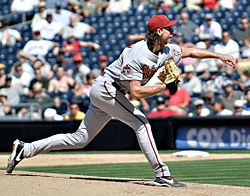

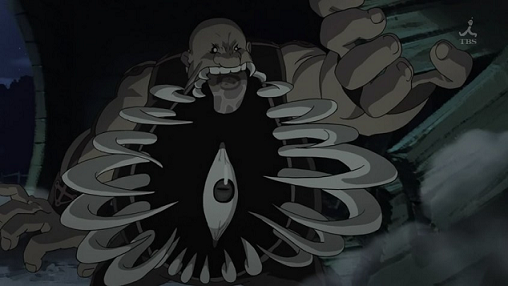
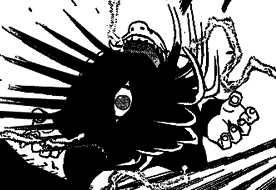
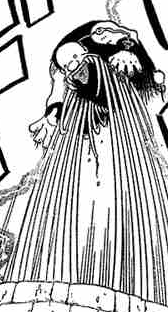
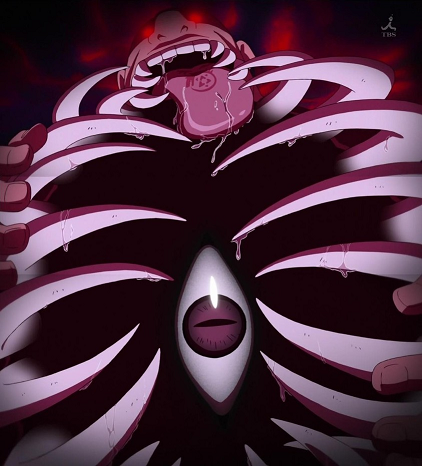
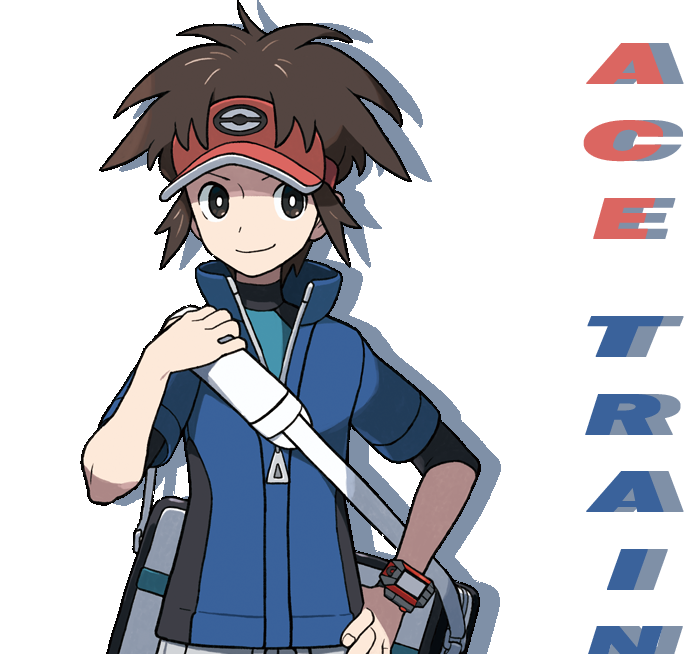
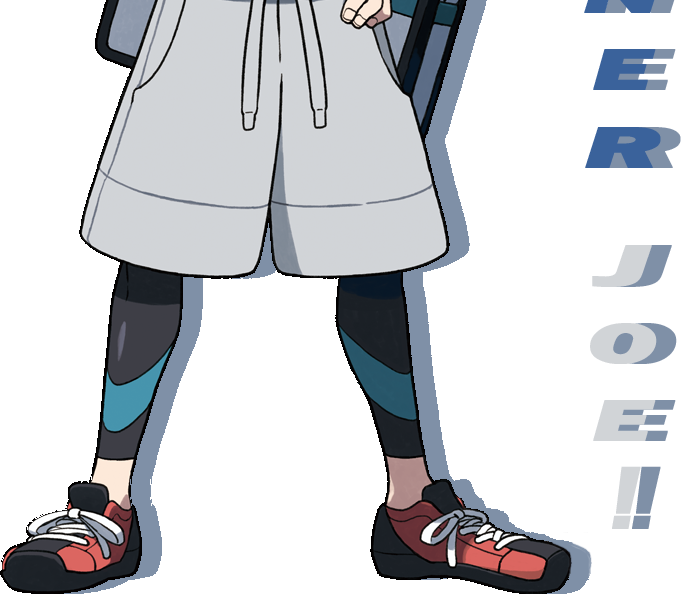


 okeball: in the bottom left corner of ATJ's portrait. When you click that, you will then be able to select your team from 6 mini-portraits with a number (1-3) indicating their order once selected, with you able to un-select a Pokemon by clicking them again. If you do not click the
okeball: in the bottom left corner of ATJ's portrait. When you click that, you will then be able to select your team from 6 mini-portraits with a number (1-3) indicating their order once selected, with you able to un-select a Pokemon by clicking them again. If you do not click the 